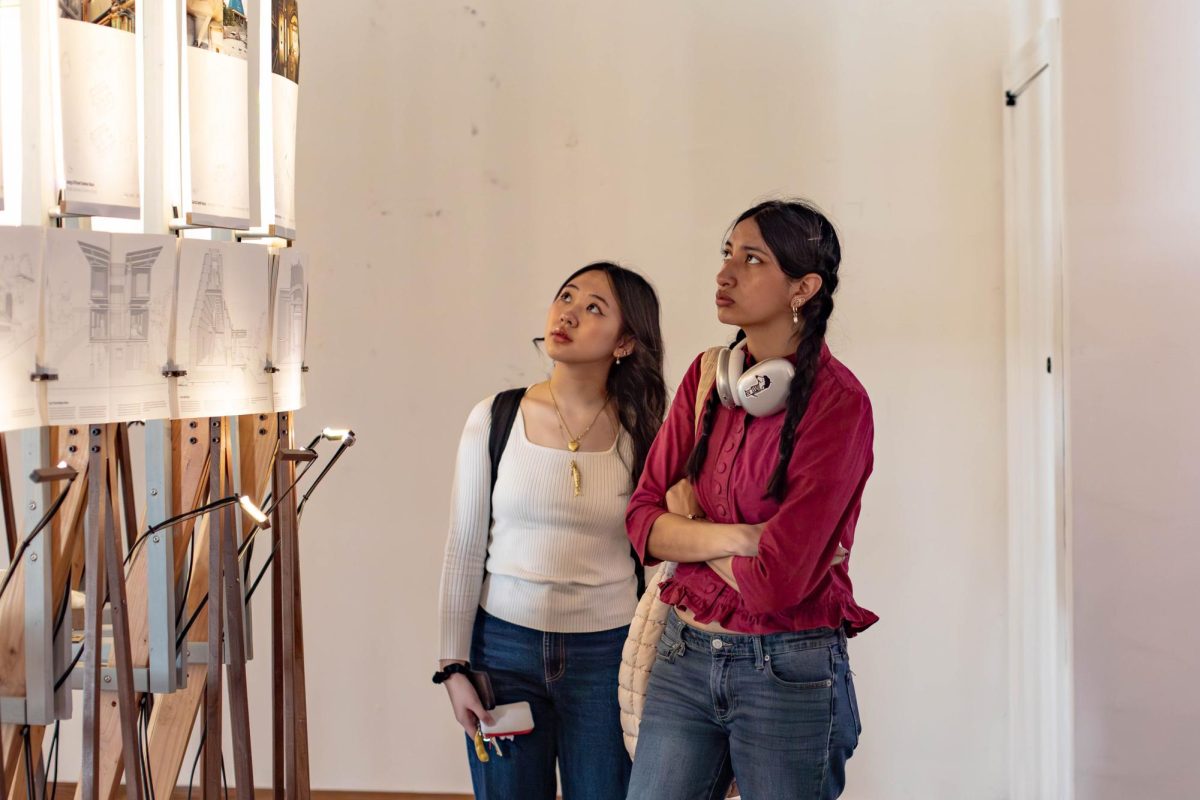Light fills Goldsmith Hall’s Mebane Gallery, highlighting a new exhibit that challenges the common materials used in architecture.
Designed and curated by Lewis Tsurumaki Lewis Architects, Biogenic House Sections is based on LTL Architects’ recent book “Manual of Biogenic House Sections.” The exhibit, open to the public from Jan. 24 to March 1, highlights why architects should use plant-based and low-carbon materials during the current environmental crisis. Its three sections feature LTL’s new book, a selection of building materials and houses designed with biogenic materials.
“(We wanted to) tie the materials to the larger question of climate and climate change and make the argument that if materials are one of the key ways in which we can reduce the amount of carbon emissions in the building sector, then those materials have to be looked at relative to how they might be a kind of catalyst for different models of building,” said Paul Lewis, a founding principal of LTL Architects.
The exhibit traveled around different universities and architectural centers before finding its way to UT. Aleksandra Jaeschke, an assistant professor of architecture and sustainable design, said she assisted in bringing the exhibit to the university because of the School of Architecture’s interest in architectural research and practice.
“I was struck by the fact that someone took those biogenic materials and decided to explore how they were being used in ways that were not just sustainable in terms of emphasizing the environmental benefits of these materials but also showing how they could be architecturally interesting and creative,” Jaeschke said.
Lewis’s opening lecture on Jan. 24 drew so many attendees that some had to be turned away, Jaeschke said. The lecture’s turnout – and the exhibit’s overall reception — has been encouraging to Jaeschke.
Architecture junior Clay Seifert attended the lecture and said the exhibit’s place at the University is important due to educational programs’ inclination to focus on traditional aspects of architecture and sustainability. Despite possible issues with localization, the cost of biogenic materials and implementing the research into urbanization, Seifert said the research and exhibit suggest good starting solutions that he has yet to see many people examine.
“(This exhibit) begins to propose typologies and morphologies of biogenic materials that are carbon negative that are actually innately valuable as design work,” Seifert said.
Lewis said he believes and hopes both those interested and uninterested in architecture take something from the exhibit due to the cruciality of using sustainable materials and methods to curb the effects of climate change.
“(Shifting to biogenic materials) alone won’t be sufficient, but given the huge carbon emissions from construction, it is a necessity that has to, in a sense, transform,” Lewis said. “We have to take it seriously and really transform what we’re doing.”















